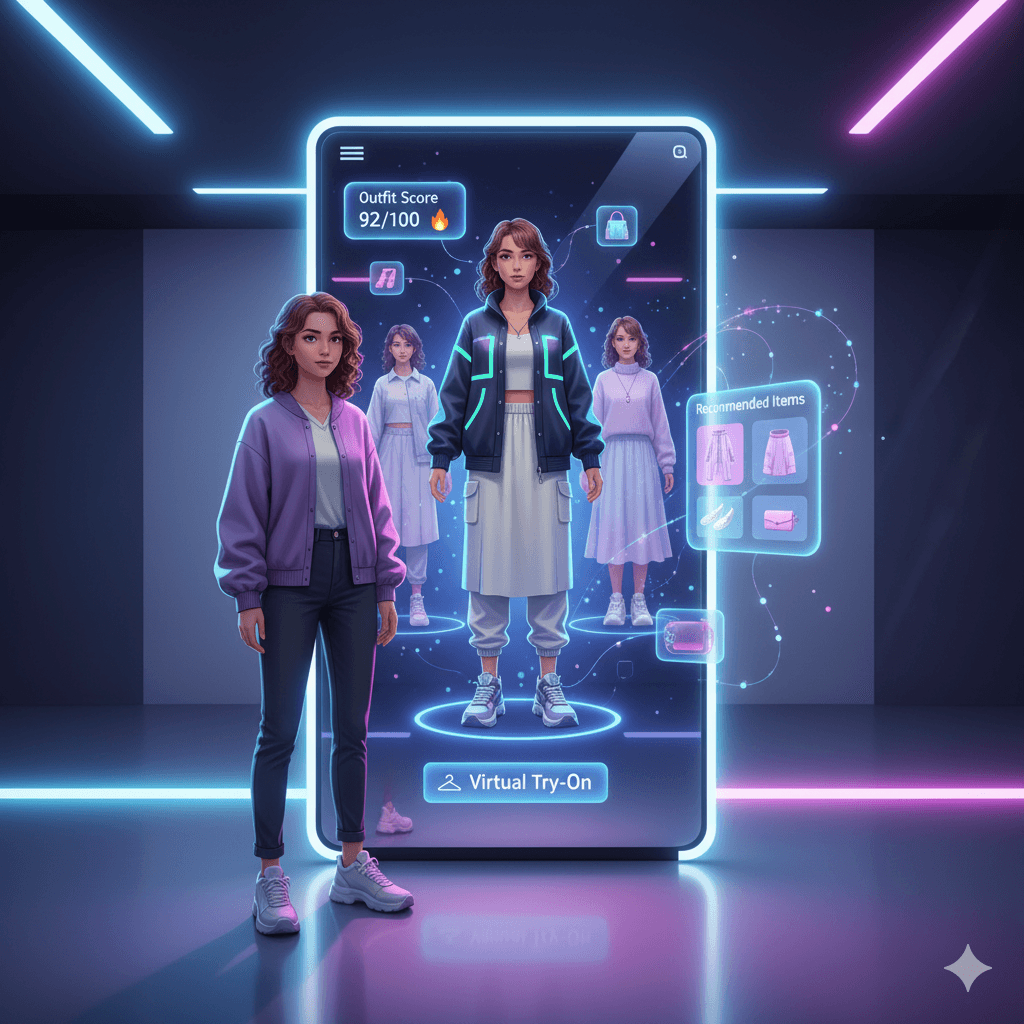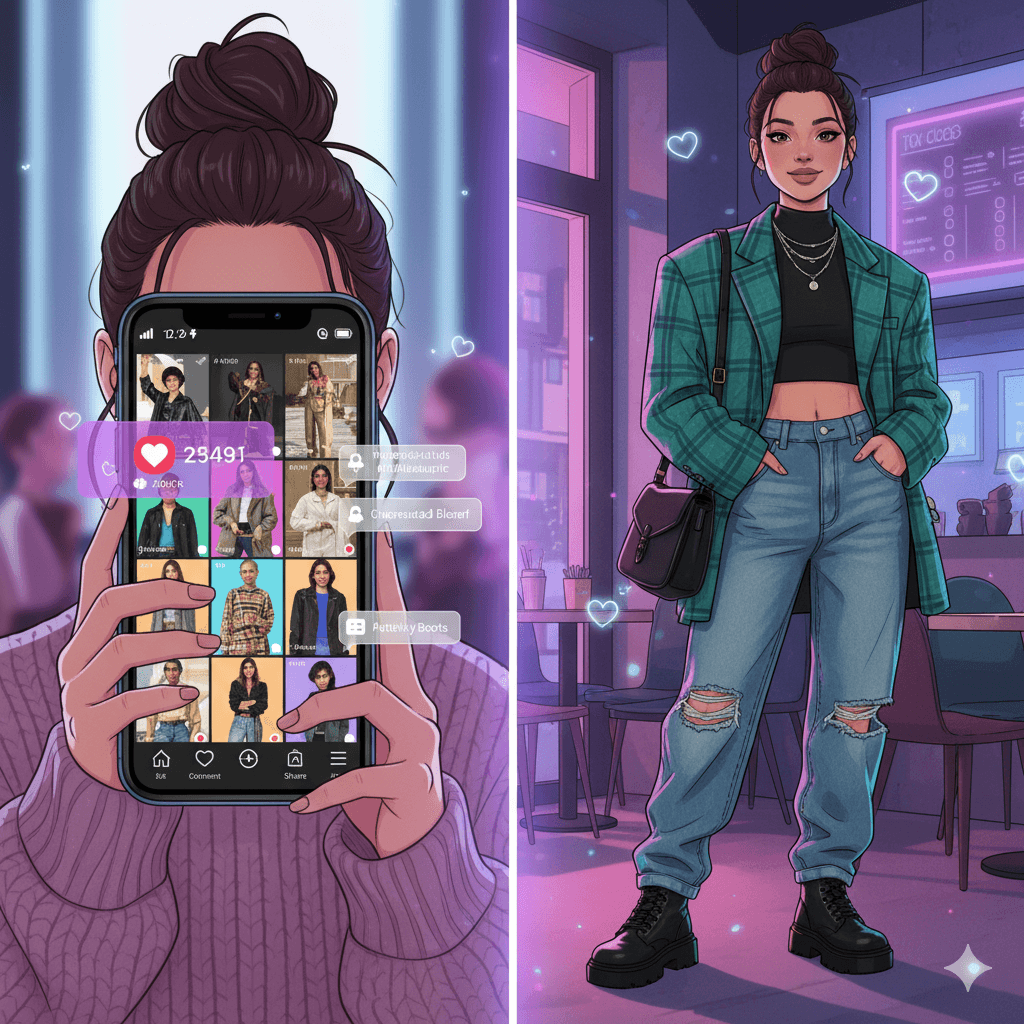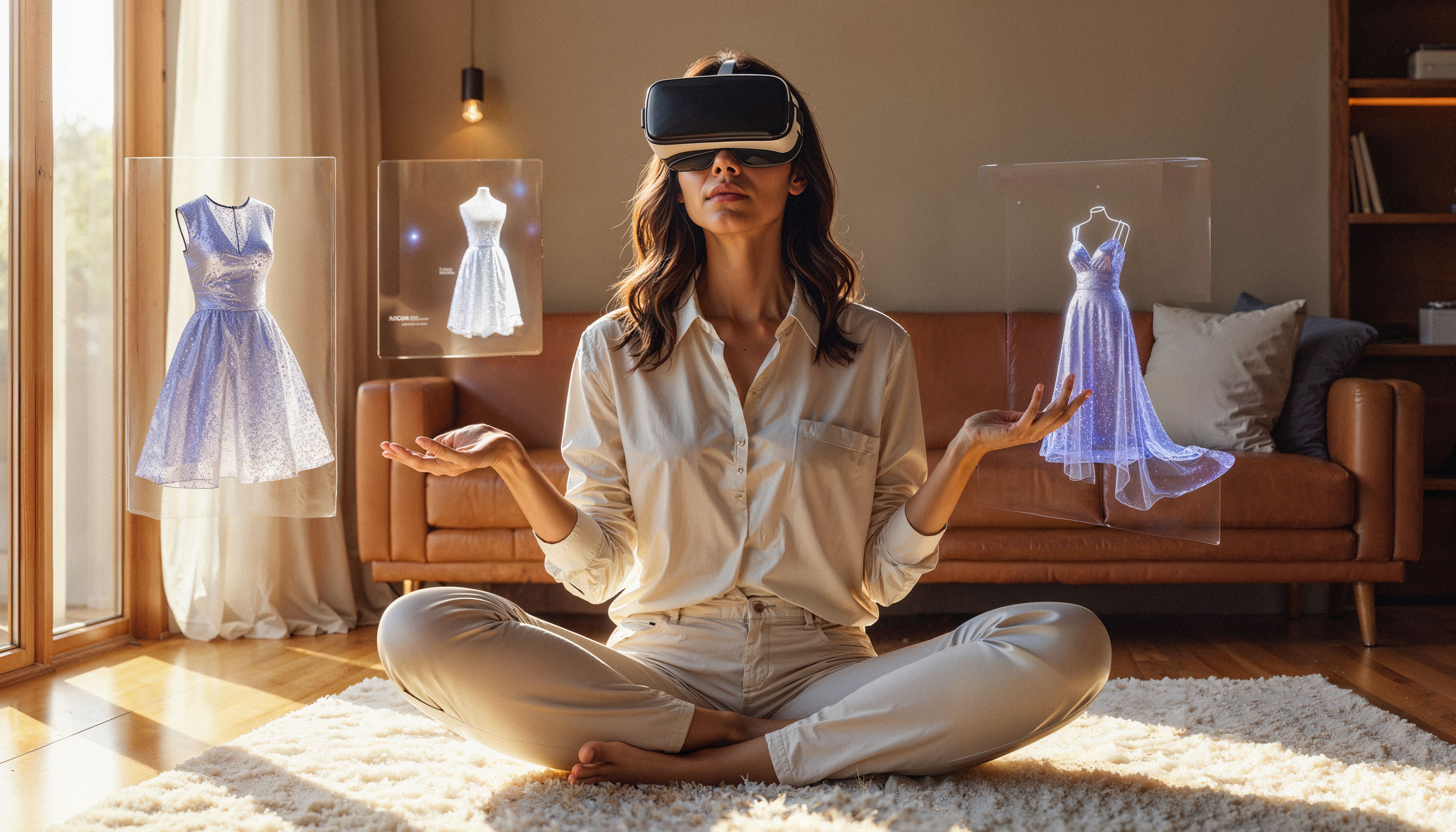AI Fashion Models From the Inside Out
Social Media in Fashion: The New Era of Style Inspiration


TL;DR
Social media has become the new fashion front row. TikTok trends, YouTube vlogs, Instagram reels, Pinterest mood boards and AI based twin try ons are reshaping how Gen Z discovers styles, evaluates outfits and brings digital inspiration into real life wardrobes. The result is a faster, more interactive, more expressive fashion cycle that blends creativity, community validation and algorithm driven influence.
Social media in fashion is no longer just about trends. It has become the engine that drives discovery, identity, self expression, and the everyday choices we make about what to wear. What once lived only on magazine covers has moved into TikTok feed drops, Instagram reels, Pinterest mood boards, and YouTube vlogs. Fashion inspiration is now instant, interactive, and incredibly personal.
But something bigger is happening. The scroll that once only entertained now shapes our closets. The looks we double tap turn into what we buy. And the AI twin that studies our style is learning how we want to dress even before we search.
This is a modern fashion discovery. This is social media in fashion, evolving into something far more powerful than trend chasing.
Let us decode how this shift happened and why it matters for the future of fashion.
How Fashion Went From Magazines to the Infinite Scroll?
Fashion inspiration used to be a quiet experience. You saw a model on a page, a celebrity on a billboard, or a runway look on television. It was slow, curated, and controlled by the industry.
Social media changed every rule.
Users create trends faster than brands. Micro communities share their own aesthetics. A single video from a creator with five thousand followers can influence millions through reposts.
This shift gave fashion something it never had before: real people, real bodies, real expression. That is why social media in fashion feels so personal. It is coming from someone who looks like you, struggles like you, or represents a dream version of you.
The runway moved to the feed and fashion has never been the same.
Did you know? Around 80% of beauty shoppers and 76% of fashion shoppers discover brands via social media, highlighting platforms as primary brand discovery sources.
Role of Leading Social Media Platforms in Fashion
TikTok: The Global Runway Where Trends Are Born Overnight
If fashion cycles used to take months, TikTok turned them into hours. Trends are created at the speed of sound clips.
- Clean girl
- Goblincore
- Soft boy
- Old money
- Indie sleaze
- Tomato girl
- Office siren
These aesthetics went viral not because designers pushed them but because creators lived them. Fashion became a shared conversation where creativity builds on creativity.
TikTok’s For You Page studies your taste with precision. Watch three videos about cargo pants and suddenly your entire feed feels like a mini trend report curated exclusively for you. This is social media in fashion working like a personal stylist who reads your mind.
TikTok also normalized small creators becoming fashion leaders. A student styling thrifted outfits has the same power as a celebrity stylist. Democratization has become fashion’s new frontier.
Instagram Reels: Where Aesthetics Come Alive Through Visual Storytelling
Instagram used to be static squares. Now it is a dynamic, aesthetic driven inspiration space. Reels show how clothes move, how outfits work in sunlight, and how a fit transforms throughout the day.
The platform shaped fashion aesthetics like no other:
Minimal chic
Monochrome basics
Streetwear edits
Vacation fits
Mirror outfit diaries
Instagram makes fashion feel polished and aspirational. The feed creates desire, and reels create possibilities.
Brands also use Instagram to listen. Every save, share, and comment shapes what they release next. In many ways, social media in fashion became the modern trend forecast.
Pinterest: The Vision Board of Every Fashion Dreamer
Pinterest is where fashion fantasies grow. Users save styles that reflect personality and mood rather than pressures of trends.
People search for:
Outfit ideas for thick thighs
Softboy aesthetic
GenZ fashion
Heartbreak dressing
Cozy academia
Plus size street fashion
Minimal jewelry styling
Pinterest is the archive of who we want to be. And fashion brands take these searches seriously. Many collections today are built from Pinterest signal data.
This is why social media in fashion feels so connected to identity. It is built from our personal dreams, not industry standards.
YouTube: Fashion Vlogging and the Rise of Long Form Influence
While reels and TikTok give speed, YouTube gives depth.
Here you find creators explaining:
Wardrobe breakdowns
Seasonal trend predictions
Sustainable fashion journeys
Plus size try on hauls
Capsule wardrobe building
Behind the scenes of designer work
YouTube builds trust. A creator showing their closet and styling process for twenty minutes develops a real bond with viewers. Their suggestions feel authentic and personal.
Fashion through YouTube becomes education. It helps viewers understand materials, tailoring, fit issues, and smart shopping decisions. This long form storytelling heavily affects buying behavior.
Why Social Media in Fashion Feels So Deeply Personal?

Because we finally see our favorite people wearing fashionable clothes. We see diversity in size, skin tone, culture, gender expression, and disability representation. Social media removed the distance between people and fashion.
GenZ especially connects deeply because they see fashion as identity building rather than trend following. Studies show that almost half of GenZ gets their style ideas directly from social media.
Social media in fashion becomes a mirror. We copy what resonates, remix what inspires us, and create what expresses us.
Fashion is becoming a shared emotional experience rather than a product.
The Hidden Pressure of Social Media in Fashion: Inspiration Turns Into Overwhelm

Social media in fashion is powerful but not perfect. It also brings challenges that deserve honest discussion.
Constant trend rotation creates identity fatigue. Watching creators dress perfectly every day makes people compare. The need to keep up can push impulsive purchases and encourage over consumption.
Fast fashion thrives because it feeds on viral trends. But fast fashion also contributes to climate anxiety, ethical concerns, and the feeling that nothing we own is ever enough.
GenZ openly reports that social media can influence body image struggles and self esteem dips. The pressure to fit into a trend immediately affects mental well being.
Fashion discovery has become exciting but emotionally layered. This is why the future of fashion needs sensitivity, responsibility, and better tools.
You know what? Almost 8 in 10 U.S. online shoppers use social media during their buying journey, with 70% engaging multiple times a week.
AI Twinning: When Inspiration Turns Into Your Real Fit

The most fascinating shift is happening right now. The looks we see on TikTok or Instagram can be translated into outfits that actually suit our bodies, lifestyle, and real wardrobes.
This is where AI twinning comes in.
AI learns from your preferences
Understands your proportions
Studies what you already own
Predicts your comfort level
Maps looks from your feed into wearable outfits
This is not about copying a creator. It is about translating inspiration into reality. Imagine seeing a streetwear fit on someone who is six feet tall and the AI automatically reinterprets it for your height, your shape, and your personal taste.
That is the new power of social media in fashion.
Glance Helps Turn Social Media Inspiration Into Real Life Style
Glance works like an intelligent shopping agent that steadily learns who you are at a personal style level. It understands the looks you keep coming back to, the colours you prefer, the silhouettes you feel confident in, and the kind of fashion that aligns with your lifestyle.
Instead of throwing random pieces your way, Glance lets you scroll through curated looks and pick the ones that genuinely feel like you. With every choice you make, Glance gets sharper and more attuned to your taste, making each new recommendation feel even more personalised and effortless.
Conclusion
Social media in fashion has entered a new era. Social media inspires. AI interprets. People create. Brands learn. It becomes a cycle of creativity, personalization, and expression that keeps fashion alive and evolving.
The next phase will be even more exciting.
AI will understand mood
Fashion content will become more experiential
Creators will build interactive look journeys
Virtual try ons will feel natural
Every outfit will feel like a co creation between the user and technology
Social media in fashion is not slowing down. It is becoming the heart of how we discover ourselves.
FAQs Related to the Social Media in Fashion
- What does social media in fashion really mean?
It refers to how platforms like TikTok, Instagram and Pinterest influence what people wear, how trends spread and how users discover new styles in real time through content creators and community driven inspiration.
2. How does TikTok impact fashion trends?
TikTok accelerates trend cycles. Short videos, styling hacks and viral challenges turn niche aesthetics into global movements within days and guide what users search and shop next.
3. Why is Instagram important for fashion inspiration?
Instagram acts as a visual catalogue for everyday styling. Reels, fit checks and creator lookbooks help users imagine outfits on real bodies and save ideas for future shopping.
4. How are AI tools changing social media driven fashion?
AI powered outfit planners and digital twins help users test whether a trending style will suit their body type, wardrobe and personal taste making inspiration more practical and personalised.
5. Is social media good or bad for fashion?
It brings creativity, access and community but also fuels fast trend turnover and comparison pressure. The impact depends on how consciously users engage with the content and translate it into real life choices.







